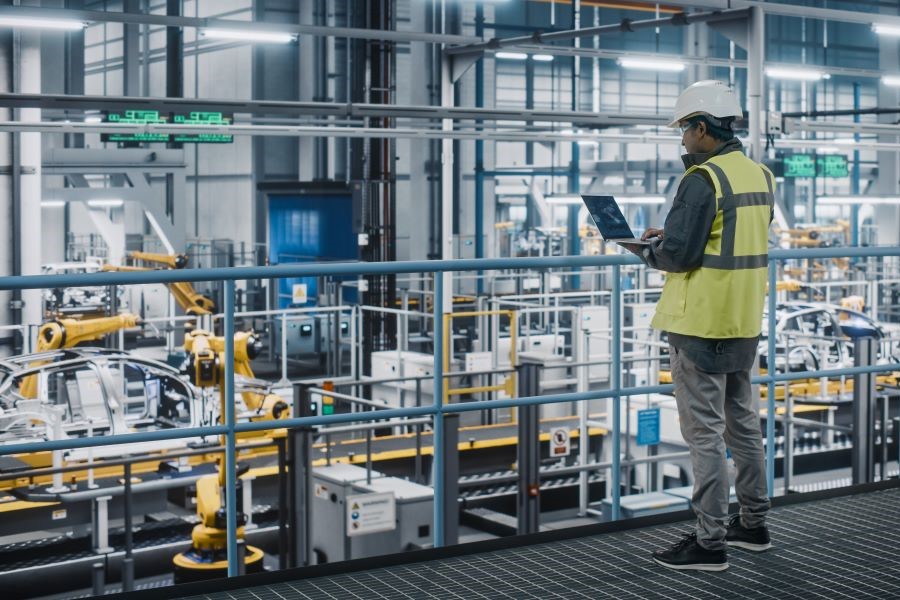Automation in manufacturing has emerged as a game-changer in the industry, significantly enhancing productivity, efficiency, and quality. As technology continues to advance, manufacturers are increasingly adopting automation systems to streamline operations and reduce human error. This article delves into the various aspects of automation in manufacturing, exploring its benefits, challenges, and future prospects.
In this article, we will cover a range of topics related to automation in manufacturing, including its definition, types, advantages, challenges, and future trends. We will also provide insights into the implementation of automation systems and their impact on the workforce. Whether you are a manufacturer, a business owner, or simply curious about this evolving field, this article will equip you with valuable knowledge.
Table of Contents
- Definition of Automation in Manufacturing
- Types of Automation
- Benefits of Automation in Manufacturing
- Challenges in Implementing Automation
- Future Trends in Automation
- Case Studies of Automation Success
- Impact of Automation on the Workforce
- Conclusion
Definition of Automation in Manufacturing
Automation in manufacturing refers to the use of control systems, such as computers or robots, for handling different processes and machinery in an industry to replace human intervention. It encompasses various technologies, including mechanical, hydraulic, pneumatic, electrical, electronic, and computers. The primary goal of automation is to enhance production efficiency while minimizing human error and labor costs.
Types of Automation
There are several types of automation used in manufacturing, each serving different purposes and applications:
- Fixed or Hard Automation: This type involves the use of specialized equipment to automate a specific set of tasks. It is commonly used in high-volume production where the same product is manufactured repeatedly.
- Programmable Automation: In this case, equipment is programmed to handle different tasks. It is suitable for batch production and allows for flexibility in manufacturing.
- Flexible or Soft Automation: This type uses reconfigurable equipment that can adapt to changes in production. It is ideal for environments with varying product lines.
- Industrial Robots: These are programmable machines that can perform a wide range of tasks, from assembly to welding, with high precision and speed.
Benefits of Automation in Manufacturing
The adoption of automation in manufacturing offers a myriad of benefits:
- Increased Productivity: Automation allows for continuous production without the limitations of human labor, significantly increasing output.
- Improved Quality: Automated systems provide consistency and precision, reducing defects and enhancing the quality of products.
- Cost Reduction: While initial investments can be high, automation often leads to long-term savings by reducing labor costs and minimizing waste.
- Enhanced Safety: Automation can take over dangerous tasks, reducing the risk of workplace injuries and improving overall safety.
Challenges in Implementing Automation
Despite its numerous benefits, implementing automation in manufacturing comes with challenges:
- High Initial Costs: The upfront investment for automation technology can be substantial, which may deter some manufacturers.
- Technical Complexity: Automation systems can be complex and require specialized knowledge for installation and maintenance.
- Workforce Resistance: Employees may resist automation due to fears of job displacement, leading to potential conflicts within the organization.
- Integration Issues: Existing systems and processes may need significant modifications to accommodate new automation technologies.
Future Trends in Automation
The future of automation in manufacturing is bright, with several trends shaping its evolution:
- Increased Use of AI and Machine Learning: As artificial intelligence continues to advance, manufacturers will increasingly rely on AI for predictive maintenance, quality control, and process optimization.
- IoT Integration: The Internet of Things (IoT) will play a significant role in enabling real-time data exchange between machines, enhancing automation capabilities.
- Collaborative Robots (Cobots): These robots are designed to work alongside human workers, enhancing productivity without replacing jobs.
- Enhanced Cybersecurity Measures: As automation systems become more connected, ensuring robust cybersecurity will be critical to protect sensitive data.
Case Studies of Automation Success
Numerous companies have successfully implemented automation in their manufacturing processes:
- Toyota: The automotive giant has long been a leader in manufacturing automation, utilizing robotics and lean manufacturing principles to optimize production.
- Amazon: Automation plays a crucial role in Amazon's fulfillment centers, where robots assist with sorting and transporting packages, significantly speeding up delivery times.
- General Electric: GE has embraced automation across its factories, resulting in improved efficiency and reduced production costs.
Impact of Automation on the Workforce
The integration of automation in manufacturing has a profound impact on the workforce:
- Job Displacement: While automation can lead to job losses in certain areas, it also creates opportunities for new roles in programming, maintenance, and management of automated systems.
- Reskilling and Upskilling: Companies must invest in training programs to equip employees with the necessary skills to work alongside automated systems.
- Shift in Job Roles: The nature of work may change, with a greater emphasis on overseeing automated processes rather than manual labor.
Conclusion
In conclusion, automation in manufacturing is transforming the industry by enhancing productivity, quality, and safety. While there are challenges to overcome, the benefits far outweigh the drawbacks. Manufacturers must adapt to this technological evolution, investing in training and development to ensure a smooth transition for their workforce. As we move forward, embracing automation will be crucial for staying competitive in the market.
If you found this article insightful, please leave a comment below, share it with your network, or explore our other articles for more information on manufacturing technologies and trends. Your engagement helps us bring you more valuable content!
Thank you for reading! We look forward to seeing you back on our site for more exciting updates on automation and the manufacturing industry.
/https://i2.wp.com/specials-images.forbesimg.com/imageserve/5fb52784bd56b9f72a755b1a/0x0.jpg)



